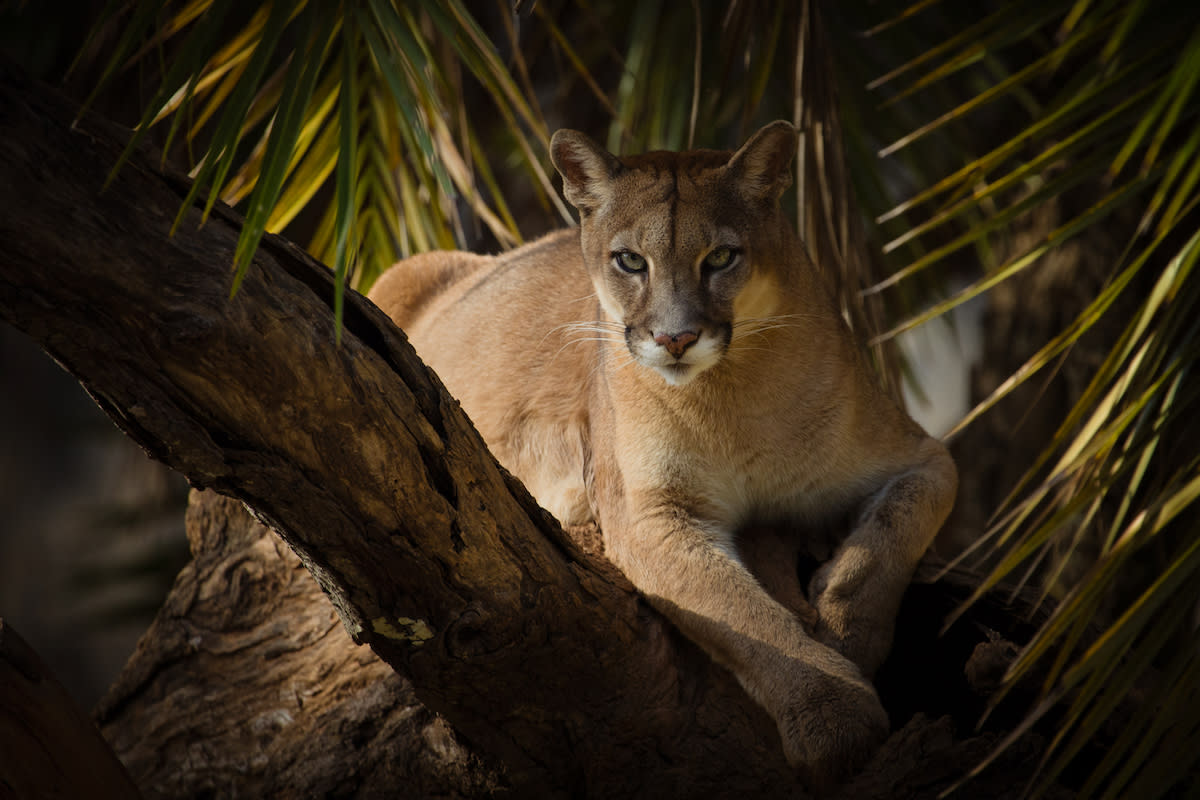Puma Purrs While Being Brushed Just Like a Big House Cat

When I first got my cats, I didn’t know much about the species. I’d never had cats before, and I’d never really hung out with many, either. I’d heard of purring, for example, but I thought it was just another sound cats made, like meowing, yelping, or hissing. I didn’t realize that it was actually an entirely different type of sound, and one that even researchers don’t entirely understand. Purring is exhibited during the entire respiratory cycle (inhaling and exhaling) and occurs in house cats as well as certain species of large cats during nursing, social bonding, and to indicate contentment, nervousness, or even pain. Some believe that purring occurs at a “healing” frequency or serves some kind of anxiolytic purpose for the animal.
Some cats purr a lot and some just a little. For my cats, who showed up traumatized, it took a long time to get a purr out of them, which is probably why I remained ignorant of the activity for so long. But now they are purring machines, which must mean I’m doing something right.
View the original article to see embedded media.
This captive puma loves to purr when being brushed by his human mom. The puma is named Braige, and he’s a young cougar with a grayish coat and blue eyes. He appears to live in Russia, where he’s cared for by a couple who has built him a massive enclosure. He also loves to purr, especially while sleeping, if his ASMR-friendly social media page is anything to go by.
Related: Two Rescue Puma Cubs Arrive at Philadelphia Zoo After Their Mother Tragically Passed Away
What Is a Puma?
A puma is one of the many names used for the same animal, Puma concolor, a large wild cat whose range extends across the whole of both North and South America. It is known by a variety of names: cougar, mountain lion, catamount, panther, léon, and it’s all the same animal. There are subspecies, too, such as the Florida Panther.
Young pumas are born with spots like leopards, a coat that they lose as they grow into adults. This process takes about two years. The pump in this video is about two years old, and you can still see the remnants of the spots on his coat.
What’s the Deal With This Puma?
In 2020, the Netflix docuseries Tiger King opened a lot of people’s eyes to the widespread trade in exotic wildcats, some of which live horrific situations. It’s not easy to keep a large wild animal like a tiger or a cougar, and it’s not cheap, either.
That seems to be okay for Braige’s family, who clearly have significant resources. They report that they bought Braige as a cub and have been hoping to give him the best of all possible lives.
They know that keeping such a large wild animal captive is sure to draw some criticism of their choices, but at this point (like so many other animals caught up in exotic animal trade), Braige is unsuited to live in the wild and he’s certainly one pampered kitty.
“Here you can just watch the life of this beautiful cat, and we will be happy to share interesting moments with you,” they write in Russian on their social media page.
And honestly, Braige’s “house” is bigger than mine, and certainly bigger than many of the large cat enclosures I’ve seen at zoos.
Braige is kept in a stunning “aviary” comprising over 1800 square meters. His play area is five hundred square meters, his bedroom is two hundred and fifteen square meters, and his walking are is an additional 1000 square meters.
“Our cat does not live in a box, as they write to us in the comments!” they cry. “Brage has a full-fledged big house!”
No one show my cats.
Looking for more PetHelpful updates? Follow us on YouTube for more entertaining videos.
Or, share your own adorable pet by submitting a video, and sign up for our newsletter for the latest pet updates and tips.


